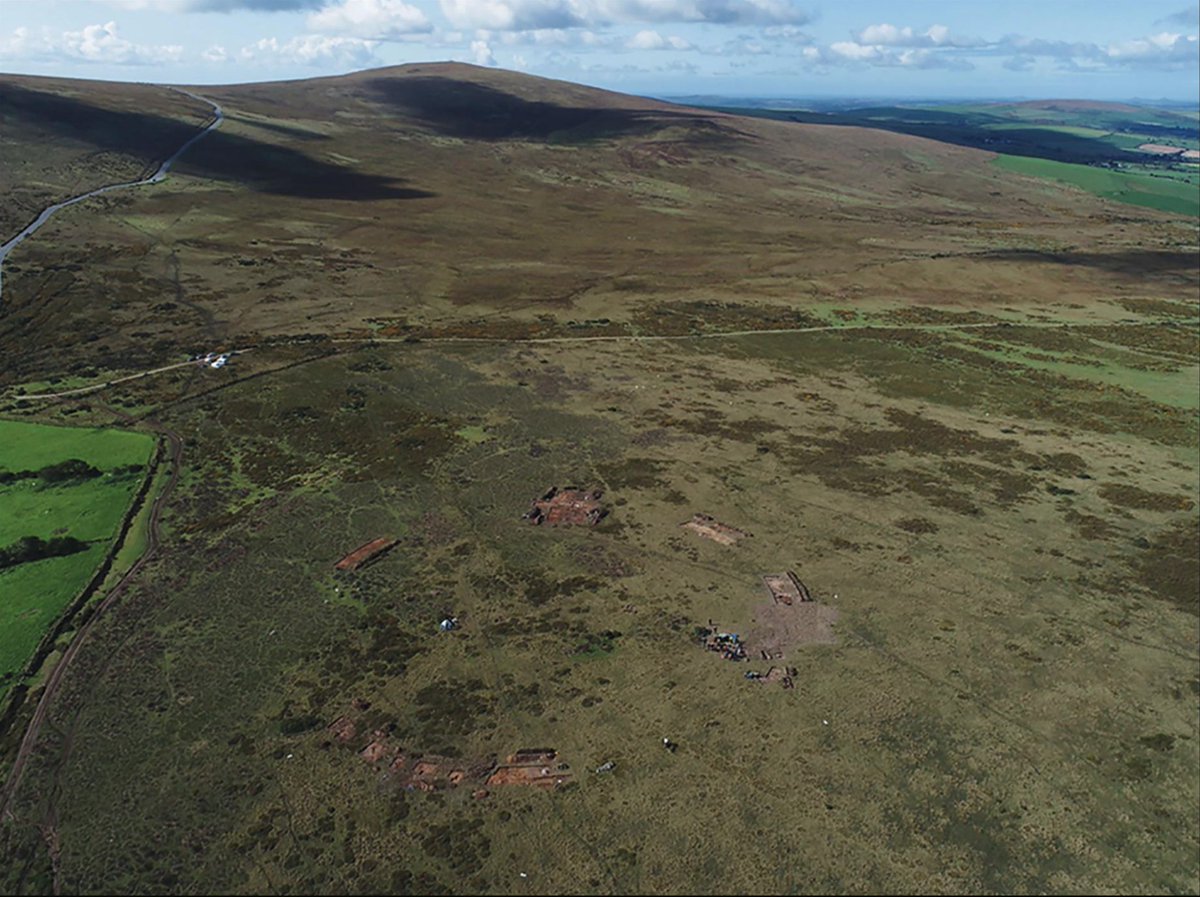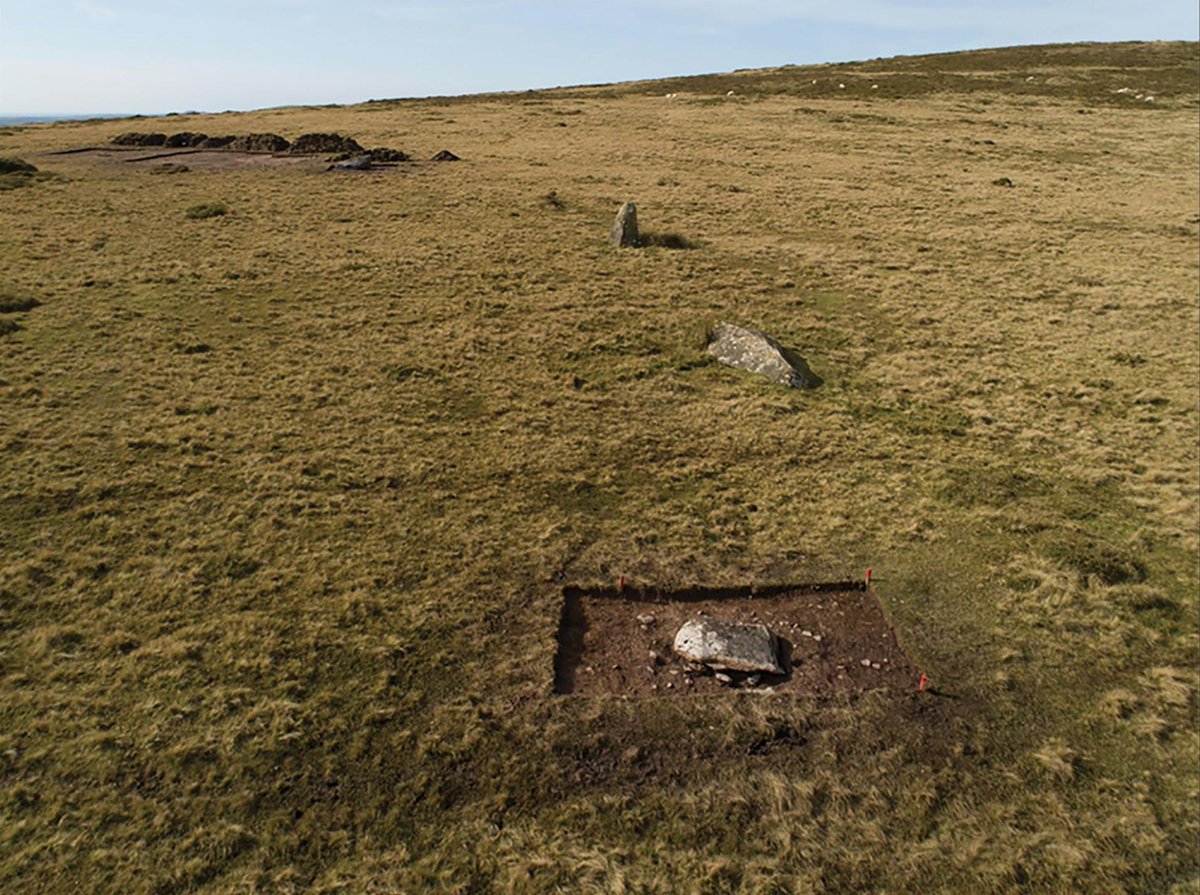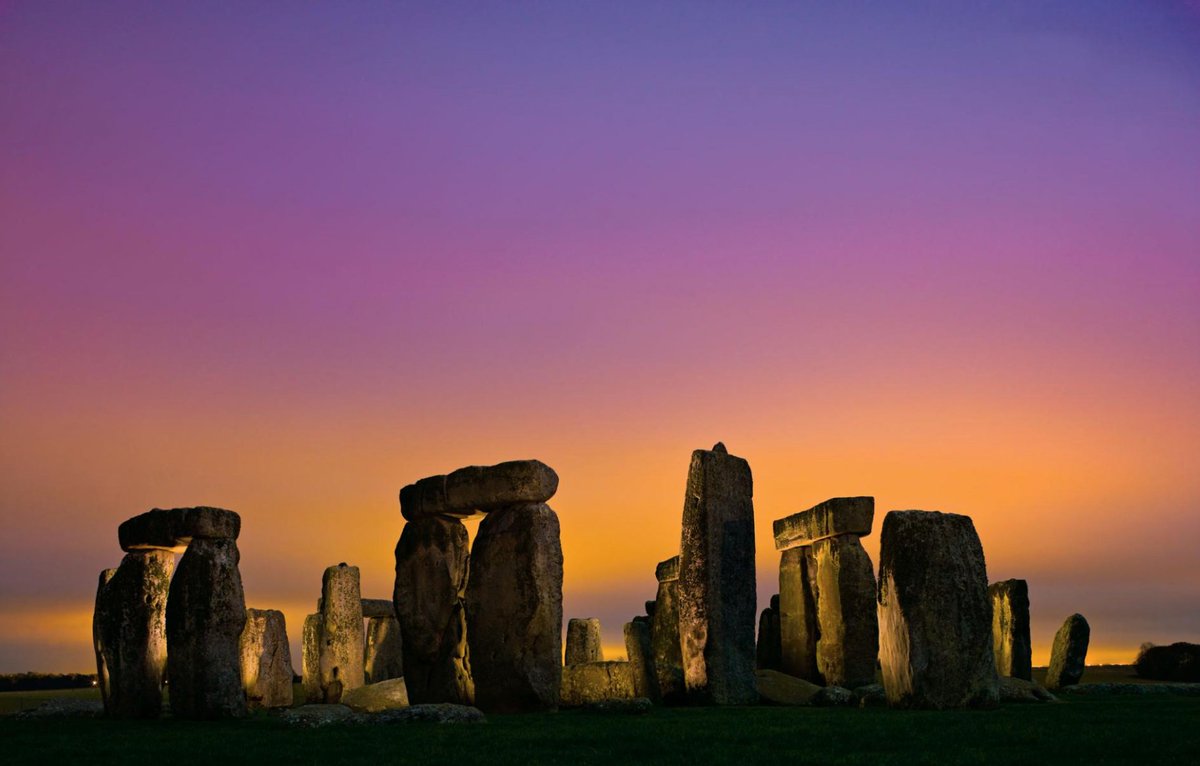An old Stonehenge legend says that the wizard Merlin tore apart the Giants’ Dance, a stone circle in Ireland, before rebuilding it in southern England.
A new study suggests that a key part of this myth may actually be true.
Me, for @NatGeo + thread! https://www.nationalgeographic.com/history/2021/02/3-ton-parts-stonehenge-may-carried-from-earlier-monuments/
A new study suggests that a key part of this myth may actually be true.

Me, for @NatGeo + thread! https://www.nationalgeographic.com/history/2021/02/3-ton-parts-stonehenge-may-carried-from-earlier-monuments/
 What's the meaning of Stoneheeeeeenge? Was it a giant granite birthday cake or a prison far too easy to escapeeeee?
What's the meaning of Stoneheeeeeenge? Was it a giant granite birthday cake or a prison far too easy to escapeeeee? 
Stonehenge is *everywhere*. Archaeologists, druids, tourists and Norwegian comedy pop stars love it. 2/x
It’s easy to see why it's such an iconic site. The 4,600-year-old stone circle on southern England’s Salisbury Plain was built by people who left no clear hints to its purpose or obvious clues to their own identity.
Which, frankly, was a bit rude. 3/x
Which, frankly, was a bit rude. 3/x
Clues to its purpose can be found in its construction story. And decades - centuries, even - of increasingly advanced archaeological work has revealed a few key things about it. It wasn't built in one go, but over several centuries. 4/x
The big standing blocks you tend to see are 20-ton sandstones that were brought from nearby, but its three-ton bluestones, forming its inner arc, came from western Wales' Preseli Hills, 180 miles away.
Why the hell would ancient Britons want to do that? 5/x
Why the hell would ancient Britons want to do that? 5/x
The British Isles, 5,000 years ago, had a noticeable lack of locomotion or any sort of decent technology. That means these bluestones were dragged on wooden sledges for 180 miles by people. Even though there were perfectly good stones to complete Stonehenge with nearby. 6/x
It would have been a remarkably exhausting and perhaps even dangerous thing to do. That at least implies these bluestones meant a *lot* to the people who moved them.
No, they didn't have magical healing properties, nor were they alien artefacts. Get out. Yes you, get out. 7/x
No, they didn't have magical healing properties, nor were they alien artefacts. Get out. Yes you, get out. 7/x
That old legend about Merlin, written in the 12th century pseudohistorical tome, 'History of the Kings of Britain', had little basis in fact. But the bluestones definitely came from two Welsh quarries - geochemical signatures were a match. Did the myth have a kernel of truth? 8/x
A team of researchers have spent years trying to find out. They've been looking for stone circles in Wales near those quarries that could be precursor stone circles - the 'original' Stonehenge that was dismantled and brought to England's Salisbury Plain. 9/x
In 2010, one site, Waun Mawn, was mooted as a candidate, but wasn't much to look at today—just four bluestones arranged in a possible arc. Remote-sensing technology able to peer beneath the surface of the site failed to find anything of intrigue, so it was ignored. 10/x
On a hunch, the team returned to Waun Mawn in 2017 and dug small trenches at either end of the arc, finding two pits where standing stones were once located. Something was there - at least, it used to be. 11/x
The soil didn't have the properties that permitted remote sensing surveys. So the team realized they would have to do this the old fashioned way: get out their trowels and dig.
And they found more of these pits - cut-out holes where standing stones used to be. 12/x
And they found more of these pits - cut-out holes where standing stones used to be. 12/x
They formed a small part of an ancient stone circle. It used to be 360 feet wide...which happened to be the same size as the trench that encloses Stonehenge.
Huh.
13/x
Huh.
13/x
How old was this stone circle? The research team turned to radiocarbon dating of charcoal from the site, as well as optically stimulated luminescence, which indicates the last time the quartz-rich sediments packed into the stone sockets had been exposed to sunlight. 14/x
Together, they suggested Waun Mawn was built between 5,000 and 5,600 years ago, predating the construction of Stonehenge.
Both monuments were also similarly aligned with the summer solstice sunrise.
Huh!
15/x
Both monuments were also similarly aligned with the summer solstice sunrise.
Huh!
15/x
But where did Waun Mawn’s stones go? One of bluestones at Stonehenge provided a clue: a very specific cross-section that matches one of the stone sockets at Waun Mawn. 16/x
Moreover, chips of rock at the bottom of one of the Waun Mawn sockets were a geologic match to that specific type of Stonehenge bluestone, a rock technically known as an unspotted dolerite.
Huhhhhhh okay what is going on here
17/x
Huhhhhhh okay what is going on here
17/x
Earlier analysis of human skeletal remains from Stonehenge found chemical evidence that some of the dead hailed from west Wales. Taken together, the data told a dramatic and unexpected story... 18/x
The stone circle at Waun Mawn was dismantled by its creators and taken to Salisbury Plain, where builders mirrored its design and used some of its bluestones - the unspotted dolerite type, as opposed to the more common spotted dolerite type - to build Stonehenge. 19/x
The Giants' Dance wasn't in Ireland. It was in Wales.
It's a working theory. But there are several key points in its favour.
If it's true, that means Stonehenge wasn't an original creation, but a replica of precursor.
Perhaps even more than one, actually. 20/x
It's a working theory. But there are several key points in its favour.
If it's true, that means Stonehenge wasn't an original creation, but a replica of precursor.
Perhaps even more than one, actually. 20/x
As only one of Stonehenge’s surviving bluestones can be confidently matched to Waun Mawn, the research team suggests that they may have been sourced from multiple sites across the region.
If so, it suggests Stonehenge was of particular importance to its migratory makers. 21/x
If so, it suggests Stonehenge was of particular importance to its migratory makers. 21/x
There are a lot of cremated remains at Stonehenge. Their DNA suggests they had at least two different ancestral origins. Some came from western Wales and Ireland; others came from eastern England.
And they met up in the middle. Why? 22/x
And they met up in the middle. Why? 22/x
They lived in different ways. They buried their dead differently too: stone tombs to the west, long barrow burial mounds to the east. Both buried at Stonehenge through cremation.
Stonehenge may have been a site of cultural unification. A Multicultural exchange in death. 23/x
Stonehenge may have been a site of cultural unification. A Multicultural exchange in death. 23/x
The area was also a place for the living too. Pig bones found at nearby sites indicate massive feasts happened here. The chemicals in their bones show that they were brought to the region from all over the British Isles. 24/x
The entire site could have been the “Glastonbury [Festival] of its time,” says one researcher, where people from across the British Isles converged to share their identities and experiences.
These different tribes shared their cultures, both in life and in death. 25/x
These different tribes shared their cultures, both in life and in death. 25/x
That doesn't yet explain why those Welsh bluestones were brought from Waun Mawn - perhaps from all over Wales - though.
But an answer may be found on the other side of the world, in Madagascar. 26/x
But an answer may be found on the other side of the world, in Madagascar. 26/x
Megalithic constructs have long been built, and are still being built, to this day on Madagascar.
Wood rots. Stone lasts forever.
Megaliths are used to represent the dead and essentially keep their memories alive for eternity. 27/x
Wood rots. Stone lasts forever.
Megaliths are used to represent the dead and essentially keep their memories alive for eternity. 27/x
The same may apply to Stonehenge's bluestones. To ancient Britons, the bluestones “must have been considered as not just valuables, but the very essence of who they were."
They were literally carrying the weight of their ancestors with them across the realm. 28/x
They were literally carrying the weight of their ancestors with them across the realm. 28/x
We can all empathise with this. Those bluestones were three-ton versions of the small mementos —photographs, letters, trinkets—of loved ones passed on.
And just like those ancient Britons, if we move home, we take those treasured totems with us. 29/x
And just like those ancient Britons, if we move home, we take those treasured totems with us. 29/x
“You’re taking the thing that represents who you are, because of who your ancestors are,” says Parker Pearson, the study's lead author.
Nothing's certain. But Stonehenge may have been not only a multicultural gathering point, but also a monument of remembrance.
30/X
Nothing's certain. But Stonehenge may have been not only a multicultural gathering point, but also a monument of remembrance.
30/X
We may be separated from these people by 5,000 years.
But the need to keep lost loved ones with us - to keep their memories alive - is, clearly, something eternally human.
End.
But the need to keep lost loved ones with us - to keep their memories alive - is, clearly, something eternally human.
End.
Thanks to everyone who spoke to me for this at such short notice. If you're in the UK @theAliceRoberts is presenting a BBC program on the new findings tonight: go watch it! https://twitter.com/theAliceRoberts/status/1360149282679119872
And thanks to @kristinromey for letting me explore this fascinating saga. :)
cc @AntiquityJ

 Read on Twitter
Read on Twitter






